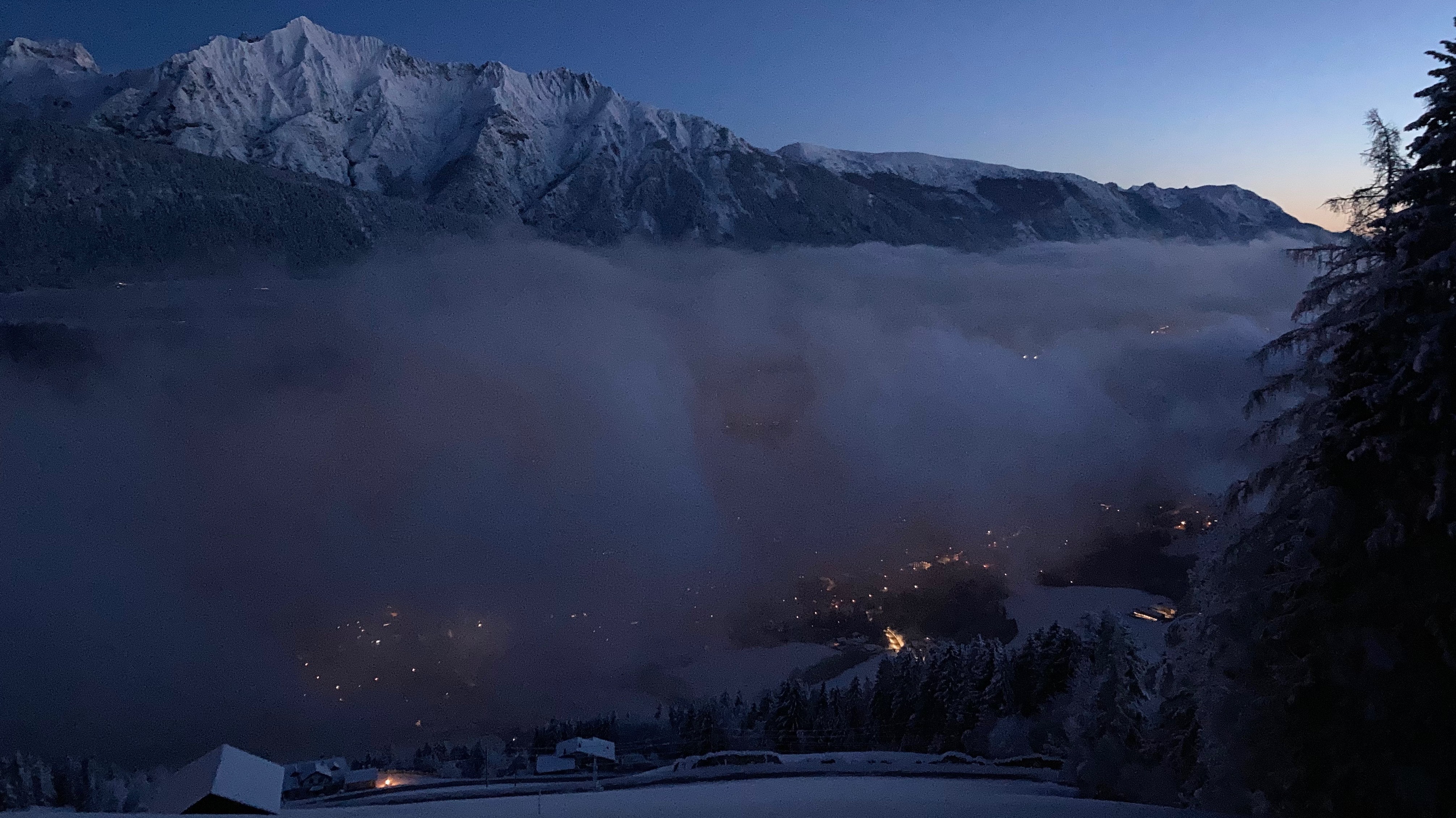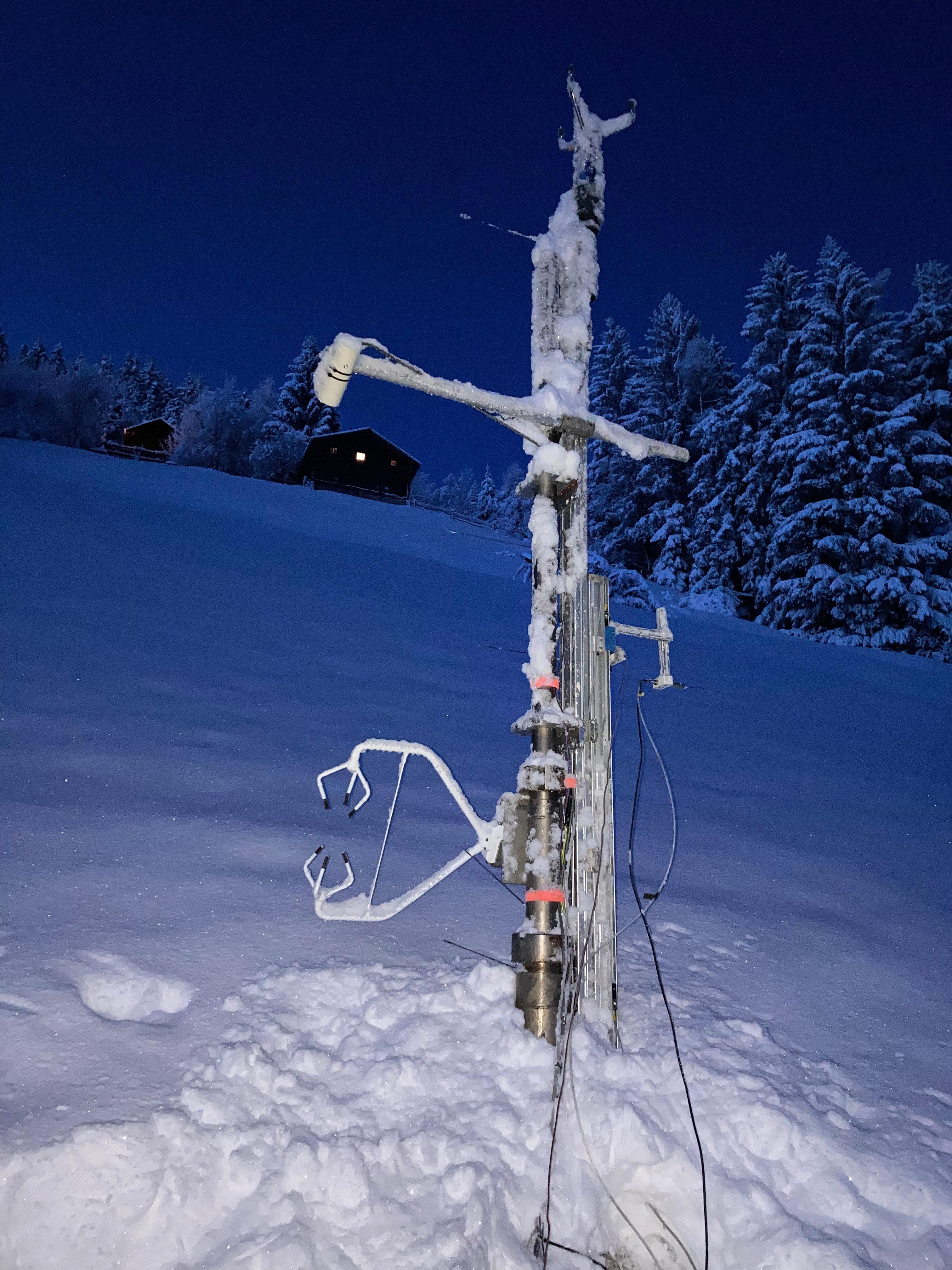Profiling of the turbulent boundary layer using a 3D pitot probe in katabatic winds on a steep slope along the Inn valley. Implications for numerical modelling and the definition of laws of the wall.

Picture rights: Christophe Brun.
Katabatic winds are gravity flows generated at night by radiative cooling at the Earth's surface. They are mainly observed in winter during anticyclonic meteorological episodes associated with stratification and temperature inversion in the lower troposphere. There are many in situ observations of katabatic processes along gentle slopes (1° to 10°) such as those reported in valleys or glaciers, but far fewer along steep alpine slopes (around 30°) in the mountains. The katabatic wind consists of a turbulent wall jet along the slope coupled to a cooled turbulent thermal boundary layer, both subject to the effects of gravity. A classical approach to coupling is given by Prandtl's (1942) model, which also includes turbulent effects, but little is known about the very close flow region below the maximum jet velocity for steep-slope configurations.
The research question addressed is twofold: on the one hand, to deepen our general understanding of the turbulent properties of katabatic winds in the zone very close to the surface, rarely observed in situ for technical and logistical reasons (millimeter scales not easily accessible with conventional meteorological probes), by bringing out of the laboratory appropriately sized, high-frequency resolution 3D velocity measurement probes, to propose and validate a set of wall laws needed to consistently define surface boundary conditions for the appropriate use of regional models in the mountains and on complex reliefs in general (e.g. Meso-NH, SURFEX).

